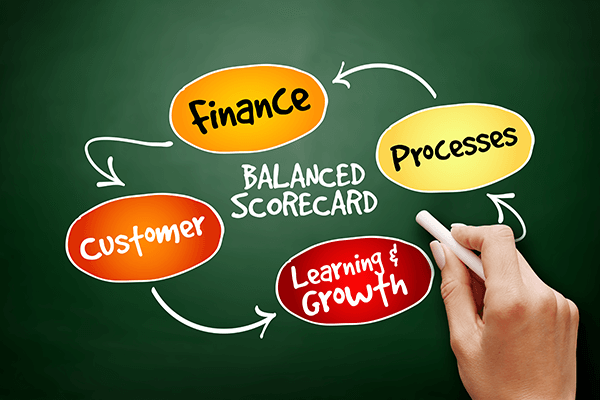 Selected non-financial metrics should also be employed in performance evaluation. This is sometimes referred to as maintaining a balanced scorecard, meaning that performance assessment should take a holistic approach. Long-term business success will not be achieved if the focus is only on near-term financial outcomes. With the balanced scorecard approach, an array of performance measurements is developed. Each indicator should be congruent with the overall entity objectives. Further, each measure should be easily determined and understood. These measurements can relate to financial outcomes, customer outcomes, or business process outcomes. Although a balanced scorecard approach may include target thresholds that should be met, the primary focus is on improvement.
Selected non-financial metrics should also be employed in performance evaluation. This is sometimes referred to as maintaining a balanced scorecard, meaning that performance assessment should take a holistic approach. Long-term business success will not be achieved if the focus is only on near-term financial outcomes. With the balanced scorecard approach, an array of performance measurements is developed. Each indicator should be congruent with the overall entity objectives. Further, each measure should be easily determined and understood. These measurements can relate to financial outcomes, customer outcomes, or business process outcomes. Although a balanced scorecard approach may include target thresholds that should be met, the primary focus is on improvement.
Blue Rail had a number of financial goals that could be included in a balanced scorecard assessment. Examples include the standard cost for material, the standard labor hours per rail set, the expected production level, and so forth. Examples of potential customer outcomes include results of a customer satisfaction survey, product returns/warranty work rates, estimated market share, and the frequency that customer bids lead to customer orders. Examples of potential business process outcomes include defect-free units as a proportion of total production, time from order receipt to shipment, size of customer order backlogs, and employee turnover rates.
The metrics are intended to measure progress toward fulfillment of the corporate objectives, and the managerial accountant is apt to be heavily involved in gathering the necessary data for inclusion in the balanced scorecard performance reports. These reports are often graphical in nature to facilitate easy use and interpretation, with particular emphasis on timely identification of trends. Sometimes, the metrics are prominently posted in the workplace. By prominent display of such data, employees are constantly reminded of, and encouraged to meet, key performance goals.
| Did you learn? |
|---|
| Describe the balanced scorecard concept of performance evaluation. |
